El Camino de Santiago
The journey of a thousand miles begins with a single stamp.
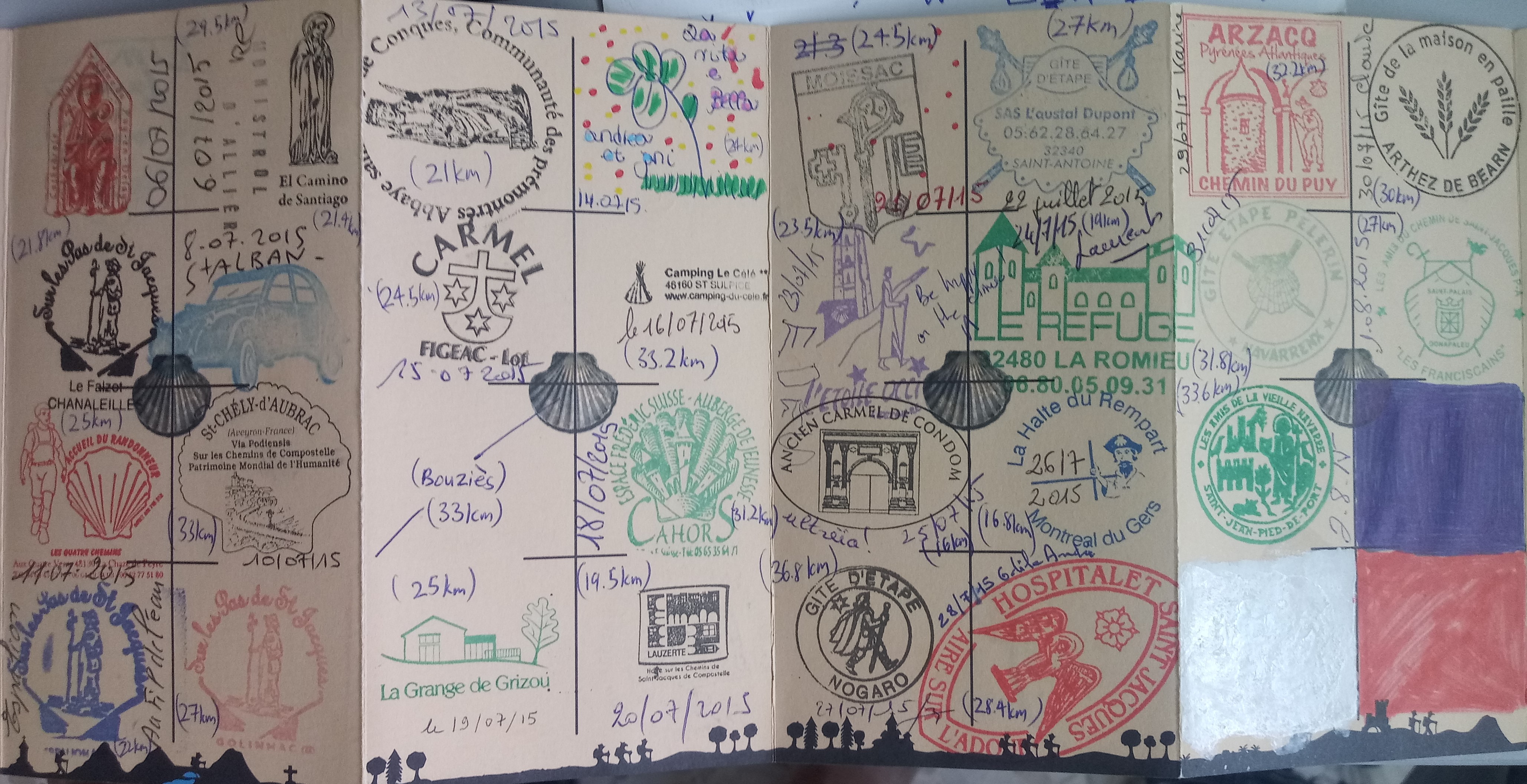
The Way of St. James
In 2015, I walked 1000 miles from the French town of Le Puy-en-Velay southwest across France, over the Pyrenees mountains, west across Spain and ending in the small town of Santiago de Compostela slightly north of Portugal. It took almost 2 months to complete.

This popular hike is known as the Way of St James (Camino de Santiago in Spanish) and is one of many ancient footpaths that terminate at the cathedral of Santiago de Compostela, said to house the remains of the apostle James and two of his disciples.

“Get out of Hell Free” card
In the Middle Ages, Pope Callixtus II offered a plenary indulgence to anyone who visited the tomb of St James during a Holy Year, and also recited a prayer, performed a confession and attended mass at the main cathedral. The plenary indulgence was a full pardon granted by the Catholic church for any and all sins committed by the recipient up to that moment in time. The Holy Years normally occurred once every 25 years, but the Pope had the authority to call an extraordinary one to celebrate a momentous event.
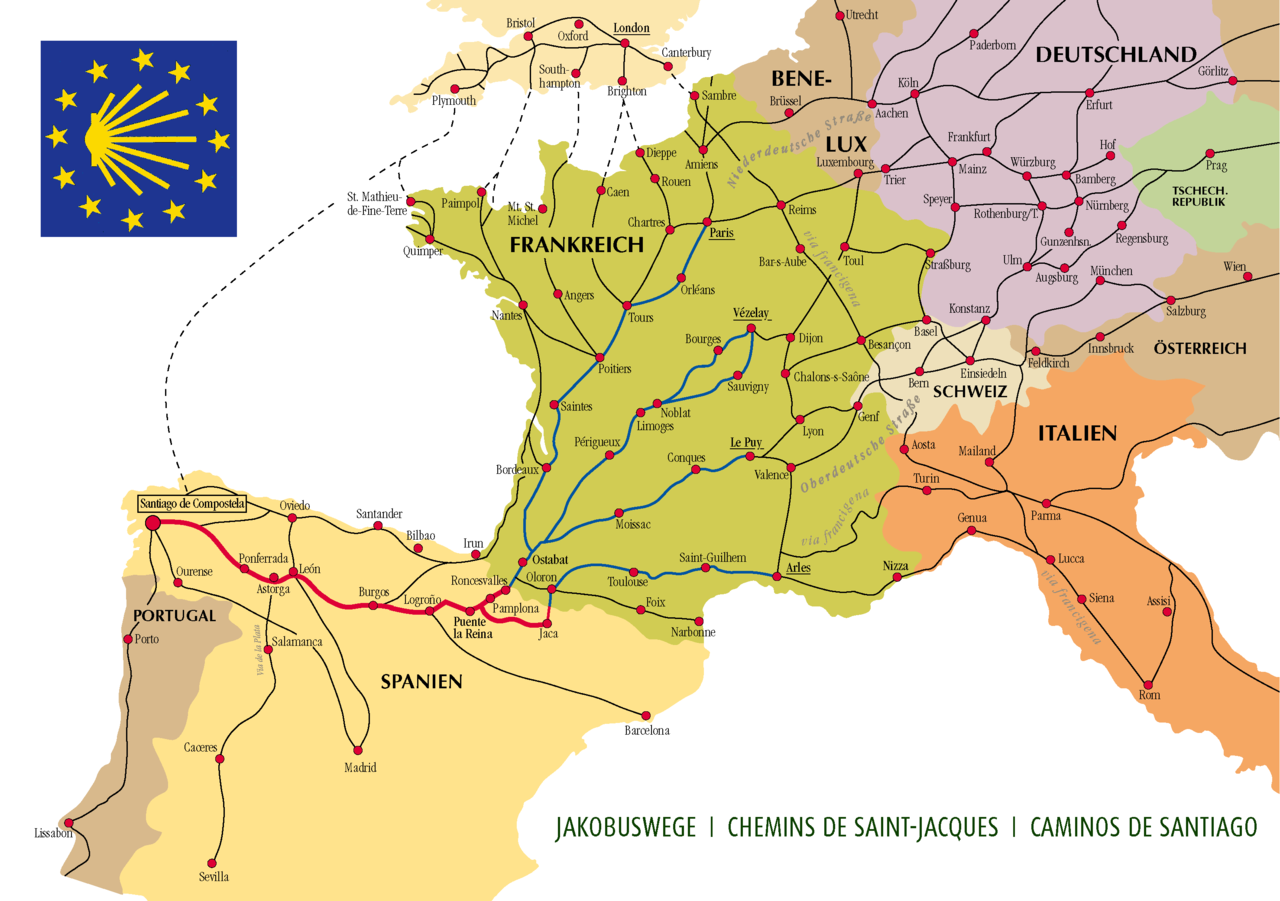
It sounded like a good deal to many Catholics, which led to a flood of people making the pilgrimage to Santiago de Compostela, especially during the Holy Years. This was before the invention of modern transport, so pilgrims usually made the journey on foot, leaving from their doorstep.
Finding the Way
The Way of St James is not a particular route to Compostela, but any route that ends in Compostela. Today roughly 300,000 pilgrims complete the Camino de Santiago annually (from a variety of starting points). The most popular route is the Camino Frances which starts in the French town of St. Jean Pied-de-Port, goes over the Pyrenees, cutting through Pamplona (where the running of the bulls takes places), passing the major towns of Logrono, Burgos and Léon, before terminating at Santiago de Compostela deep in the Galician part of Spain.
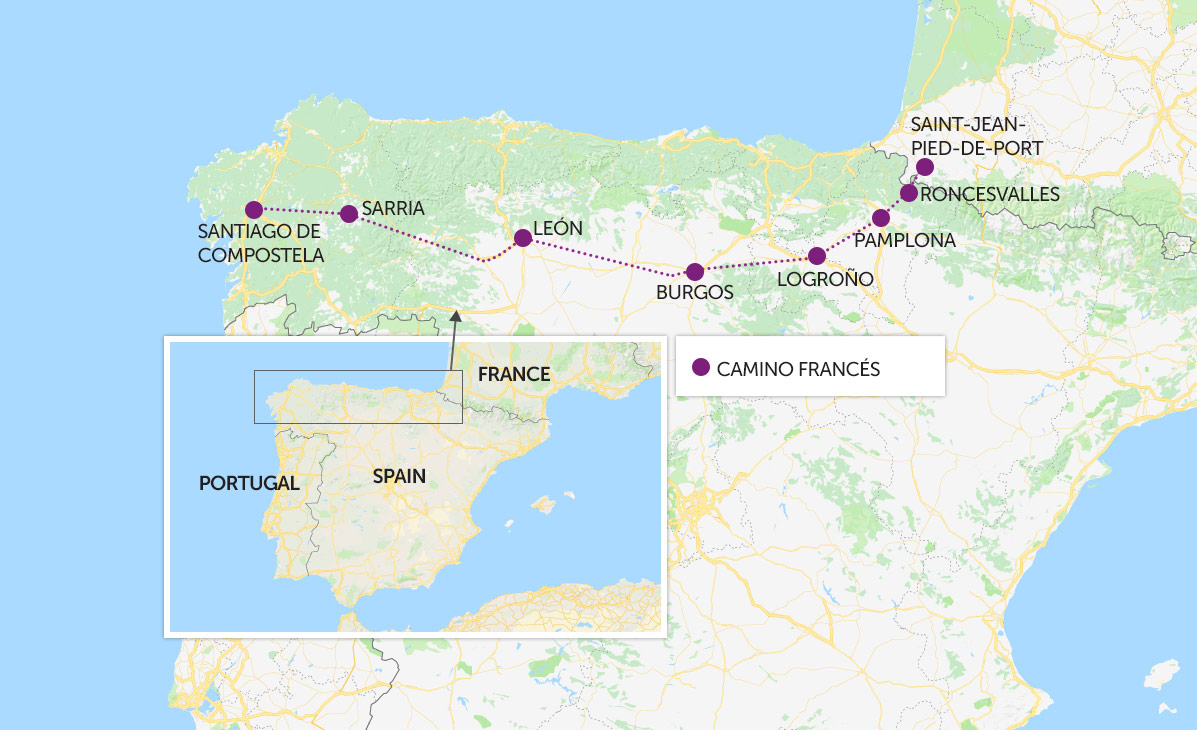
The terrain and elevation change (after the first day over the Pyrenees) on the Camino Frances are comfortable enough that this should be an easy hike for someone of moderate fitness and age. The route passes through many towns and villages and infrastructure along the Camino is generally very good. Camping and cooking are not required as accomodation and food are easily available along the way. Older folks or out-of-shape hikers can easily adjust their daily distances with the large number of rest points. Luggage delivery from hotel to hotel is also available.

Camino basics
In many popular Camino starting locations, there is a pilgrim’s office (or church) where you can obtain a créanciale (pilgrim’s passport).
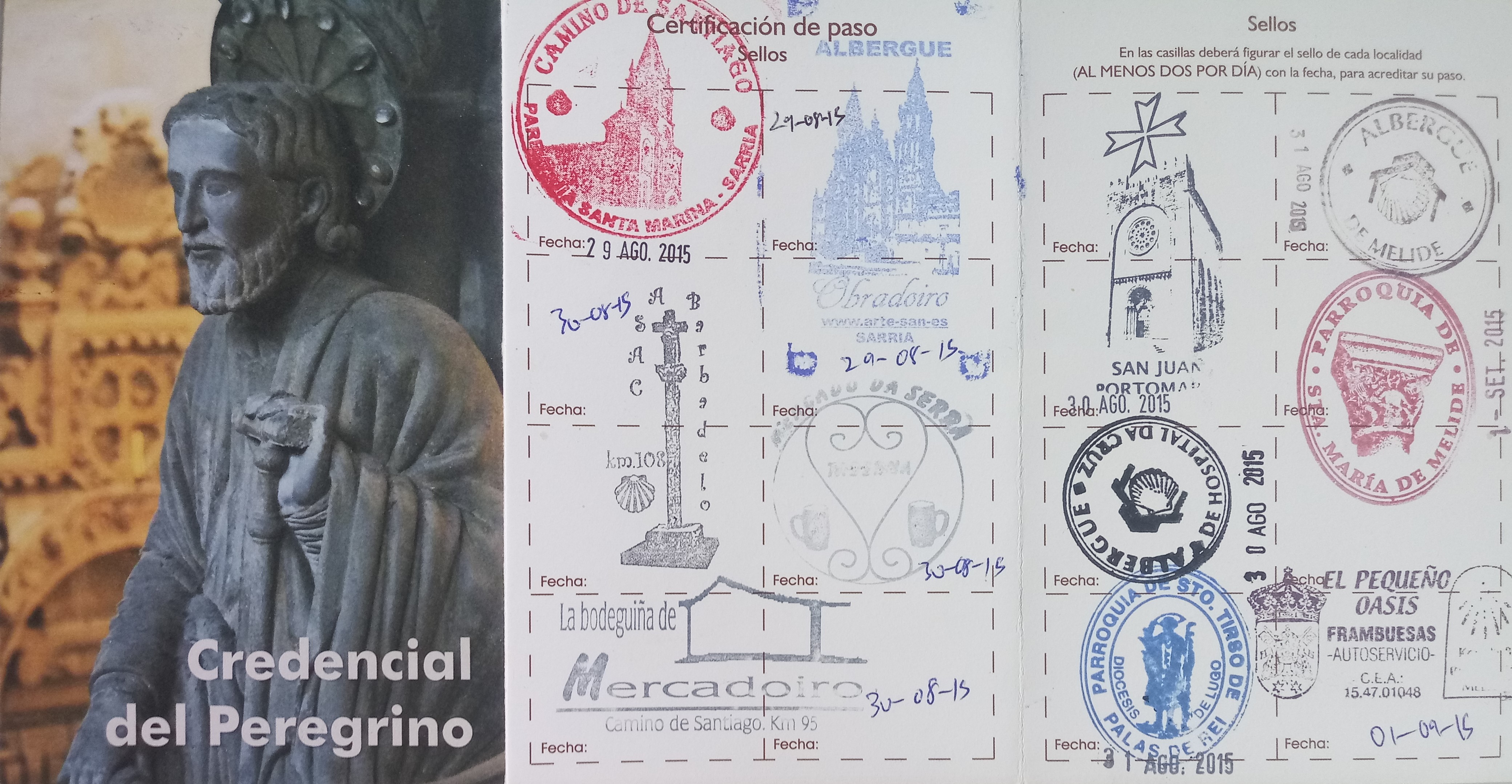
You need this passport to collect your camino completion certificate at Santiago de Compostela, and for staying at public albergues.
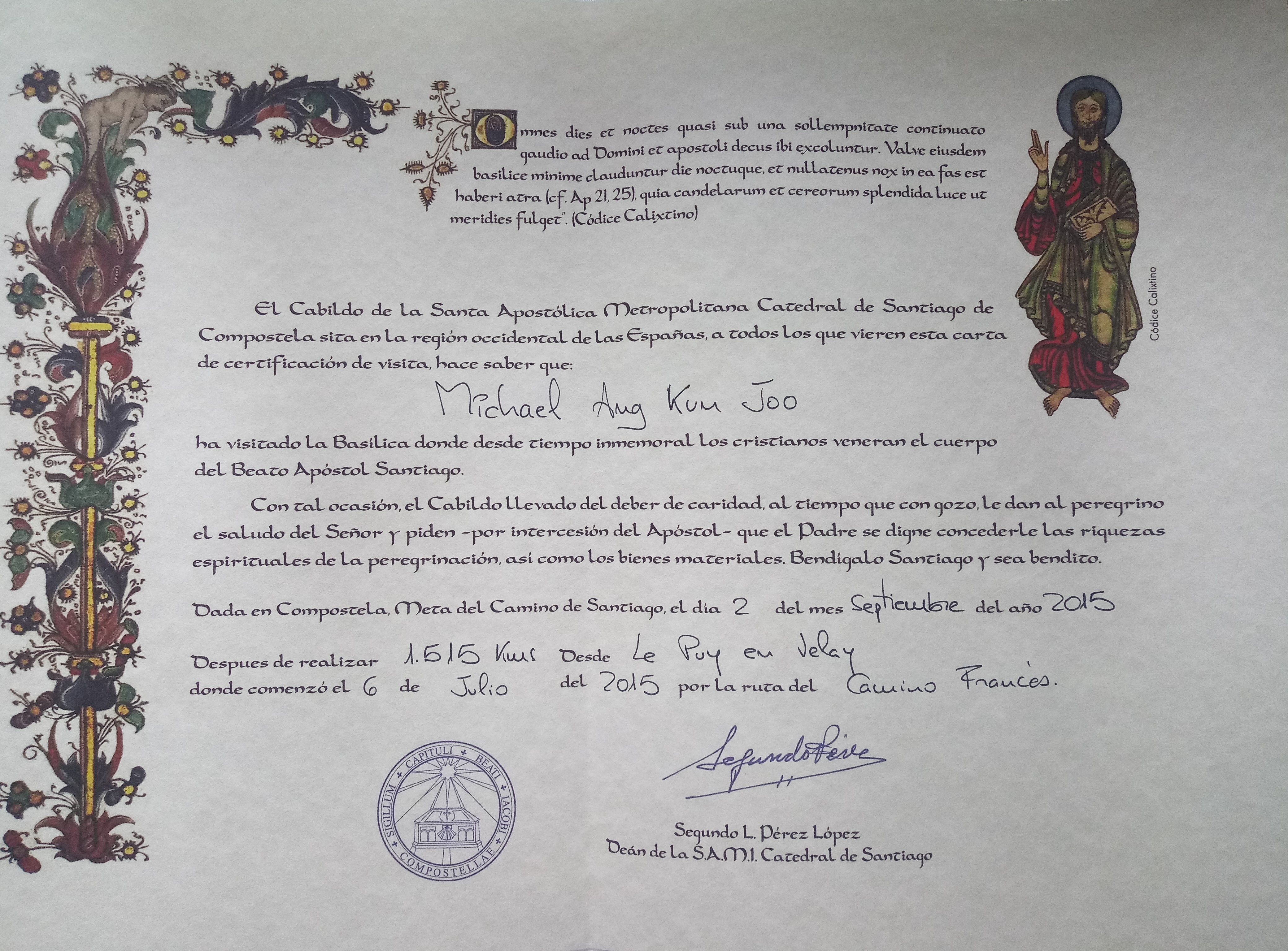
Accomodation on the camino generally consists of public albergues, private albergues and hotels/B&Bs. An albergue is a kind of hostel for pilgrims. It is usually cheap dormitory-style accomodation, with a shared kitchen and showers. Private ones are nicer, and might provide bedding and/or soap and towels.

Hiring a guide is generally unnecessary on the camino, especially along the popular routes. The path is well signposted with scallop shells (the symbol of St. James) and you will usually see many pilgrims on the path in front and behind you, making it difficult to get lost.
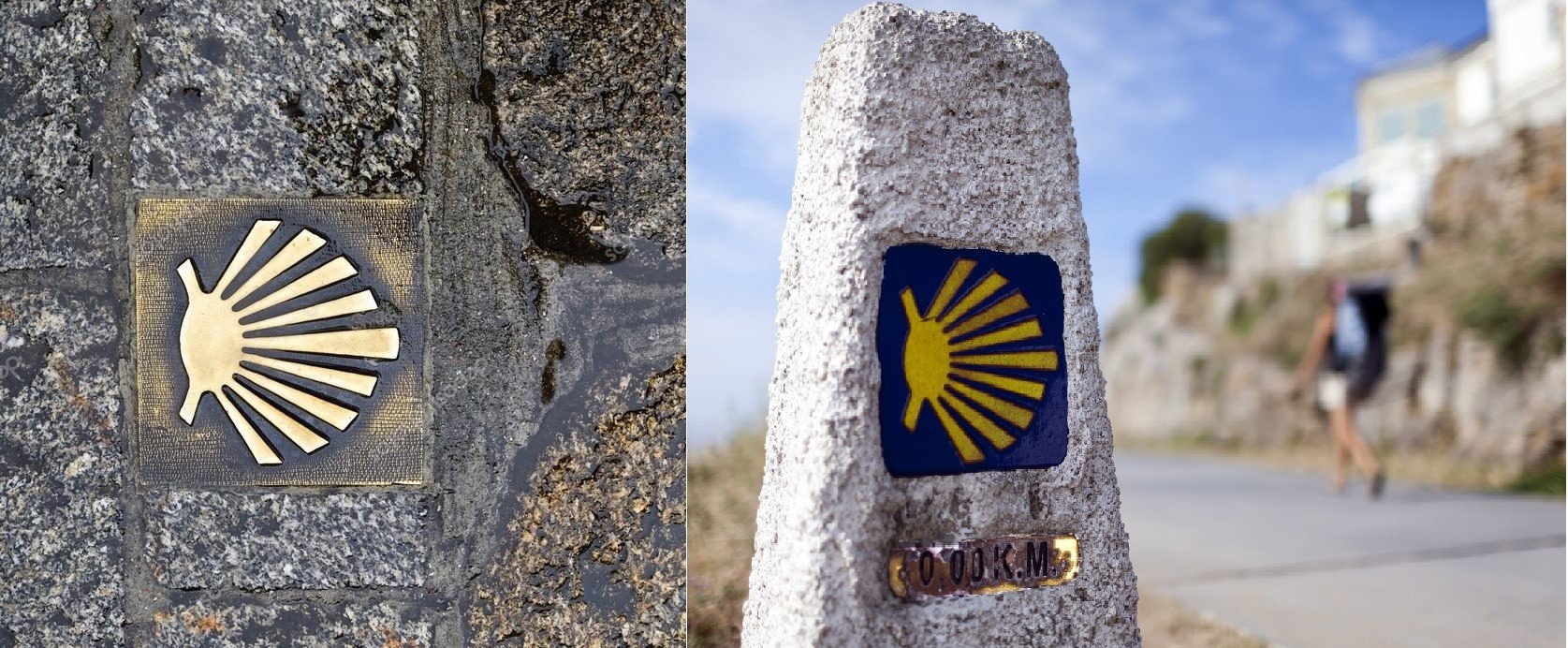
Terrain on the camino is generally very friendly, as the modern trails were built over or parallel to ancient pilgrimage routes. On the Camino Frances, it starts with woodland paths cutting through towns and villages up to Logrono. The middle section is rather exposed long stretches of dirt roads through agricultural farmland. Finally, in Galicia, the path cuts back into woodlands and tiny villages with occasional rocky climbs.
Pros/Cons of walking the Camino
- Easily accesible challenge
The camino is a beginner-friendly introduction to multi-day hiking. For most newbie hikers, completing the 780km of the Camino Frances is far enough out of their comfort zone to feel like an incredible adventure and a great personal accomplishment.
Yet at the same time, the camino offers enough comfort to make the experience more enjoyable. Easy access to water, food and accomodation means you will not have to carry as much weight on your shoulders. You also have access to modern toilets and showers at the end of every day and emergency services available should you need them.
- Different hiking experience
Unlike most nature hikes that bring you through scenic nature parks or climbing up to impressive view points, the landscapes along the camino are probably some of the most mediocre compared to other hikes. The camino was always a path that took people to Compostela in the shortest amount of time, and did not care for scenic views along the way.
However, this same history will give you the experience of sleeping in the same abbeys that housed pilgrims from years past. You will get to see first-hand the influence of the Camino in the churches and villages along the route, and get to take part in some of the traditions that pilgrims of the past used to do. (e.g. attend mass, singing the camino song, eating communal meals)1

- Long duration and many people
The 780km of the popular Camino Frances will take most people 4-6 weeks. That is a very long time to be hiking. If you are not used to it, you will likely experience the monotony of daily hiking at some point, which might not be the relaxing holiday you originally intended. The camino is also a rather popular hike, and the trails and albergues can get packed with people during high season or closer to Compostela.
But the daily hikes also give people a great chance to be alone in their thoughts. It can help people find solutions to deep personal problems, to learn about their inner thoughts and achieve better self-clarity. You will also make new friends along the way, as everyone leapfrogs each other during the day and meet up at the albergues every night. The long duration and constant contact mean that sometimes these friends even remain friends after the camino. This is especially true if you go alone.
- Lots of road walking
Unlike most popular hiking trails, there is a decent chunk of walking that will be on paved roads, especially towards the end. If your feet are sensitive, they might not take well to the impact of walking 50km on hard road in a day. The presence of roads near the trail will also result in occasional traffic noise during your hike.
- Poor food quality
The quality of food on the camino is generally of low quality. Unless you pay top dollar in nice restaurants for every meal, the cheaper local options tend to be bland pastas, oily eggs, lots of ham and canned veggies. There’s a distinct lack of affordable fresh food and most meals here feel like a worse “diner” version of the original dish. I did however, really enjoy the cheap coffee and breakfast pastries every morning.

Pre-trip preparation
These are additional things you might want to consider during your preparation. I’ll spare the fine details that you can easily find on an in-depth online camino guide.
- Watch YouTube, do some online research, read about people’s experiences on the Camino.
- Research the different routes and starting points. Note the duration, terrain, popularity, distance, infrastructure.
- Pick a camino based on your requirements and have some time buffer if possible.
- Invest in good equipment (backpack, shoes, hiking poles) as the duration is long.
- Pack as light as possible. You can wash clothes at albergues and buy refills of almost any consumables along the way.
- Before the hike, do some regular walking (backpack on) to get your shoulders and legs used to the weight. Improve your fitness if your lifestyle is sedentary - it will greatly reduce the pain during the first few days.
Other tips
- Bring more money - this is very useful in smaller towns.
- It gets very hot during the afternoon in summer and there are long stretches of path without trees. Take an afternoon siesta like the Spanish, or hike with an umbrella.
- Journal your thoughts - future you will thank you for this.
- Send home any equipment that you discover you don’t need - use the local post office.
- Hang wet clothes on your backpack to have them dry in the afternoon sun
- Don’t be afraid to deviate from the route if something catches your eye - you can always take public transport to catch up if you fall behind schedule
- After Santiago de Compostela, continue on to Finisterre (“edge of the world”) and Muxia (quiet beach town) to escape the bustle of the city.

Guide books
A final word here about guide books for the Camino. I highly recommend them as they help you plan where to refill water, where to stop for meals and provide the prices/locations of the albergues. They also highlight nearby detours that you might want to take.
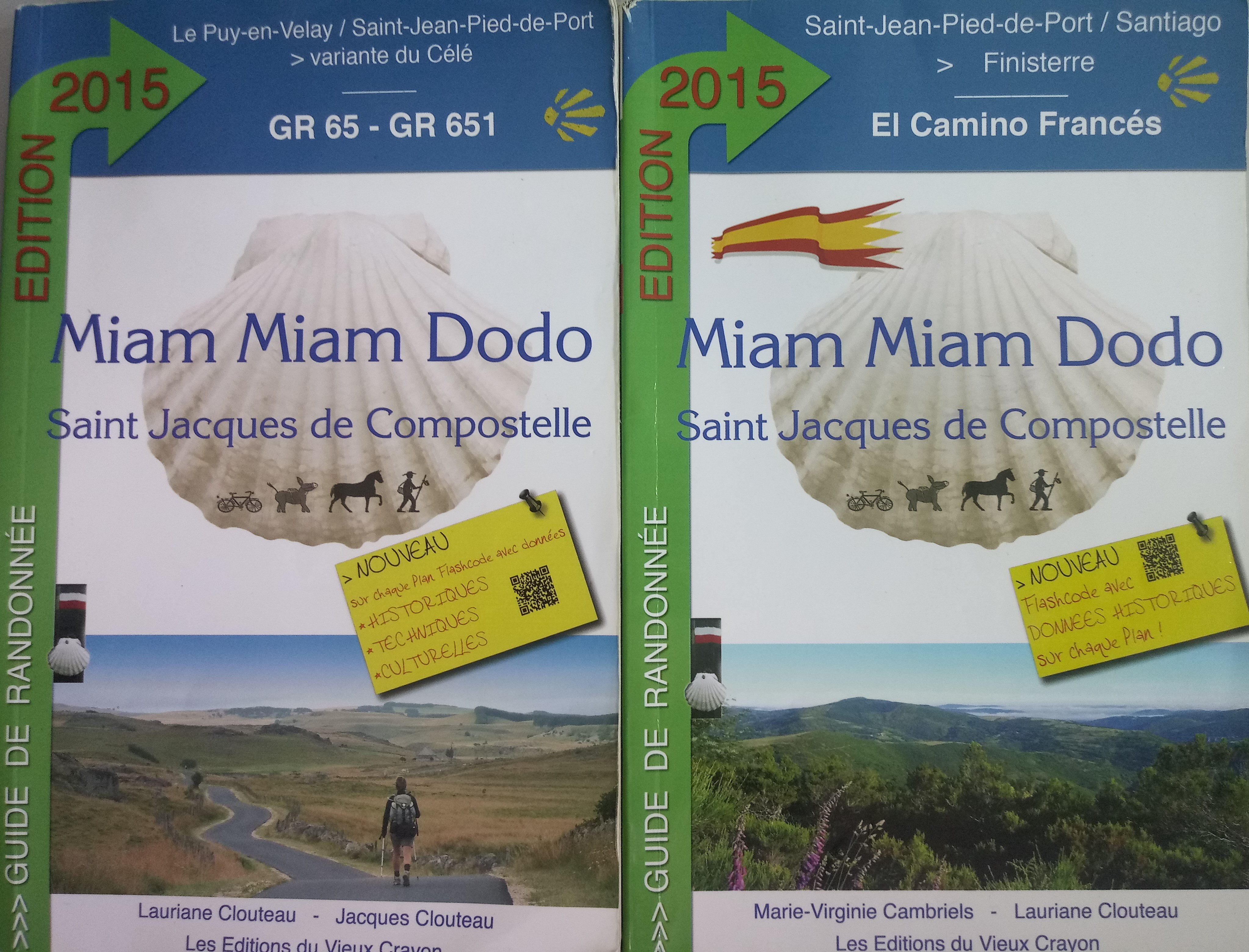
If you can read basic French, the Miam Miam Dodo is the best guide book you can get. For the Caminos starting deep in France, they are the gold standard.
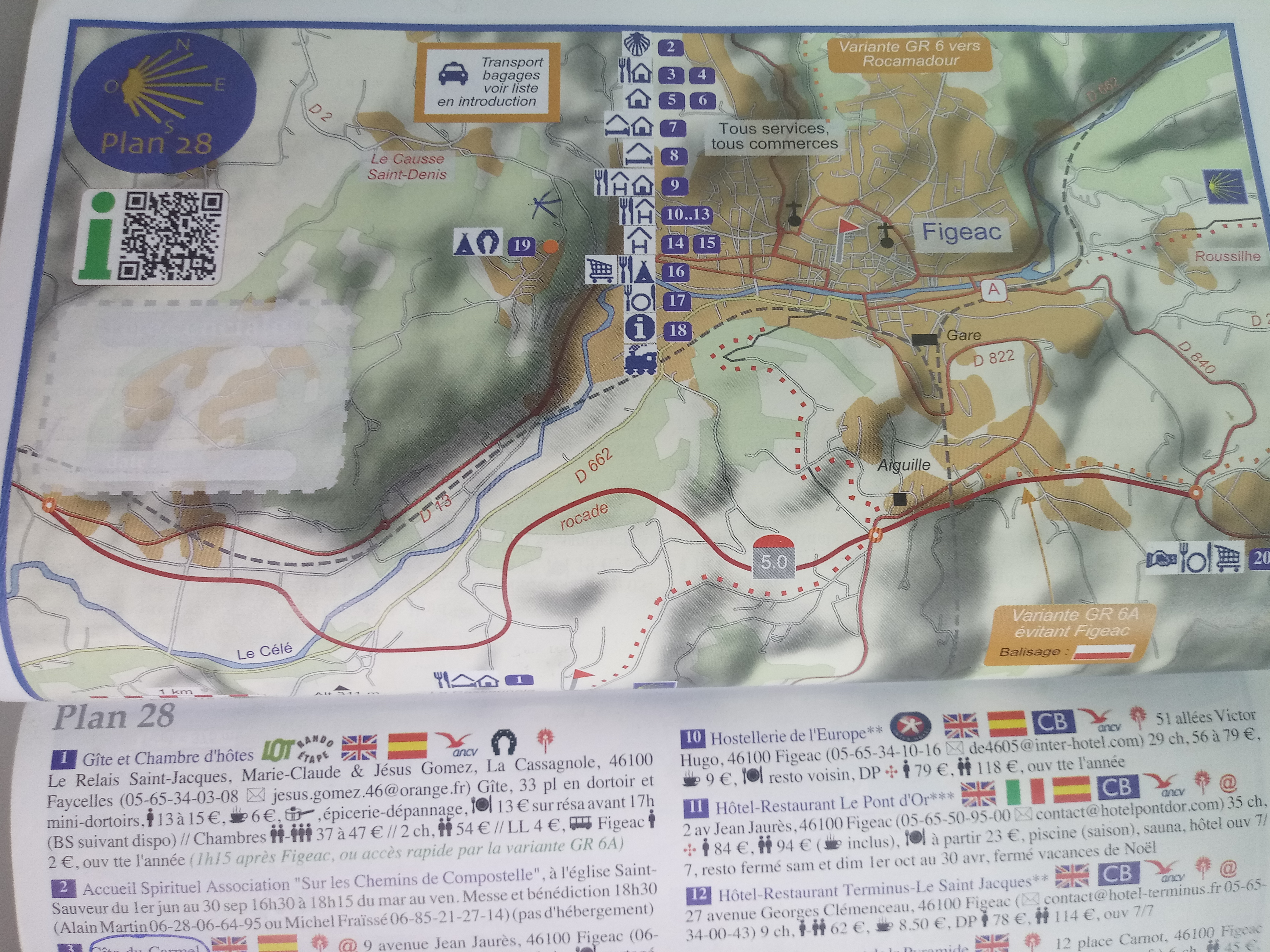
It is very lightweight and has distance/elevation maps marking out everything a hiker would need, together with prices, phone numbers and opening hours. They also do a good job of including route variants.
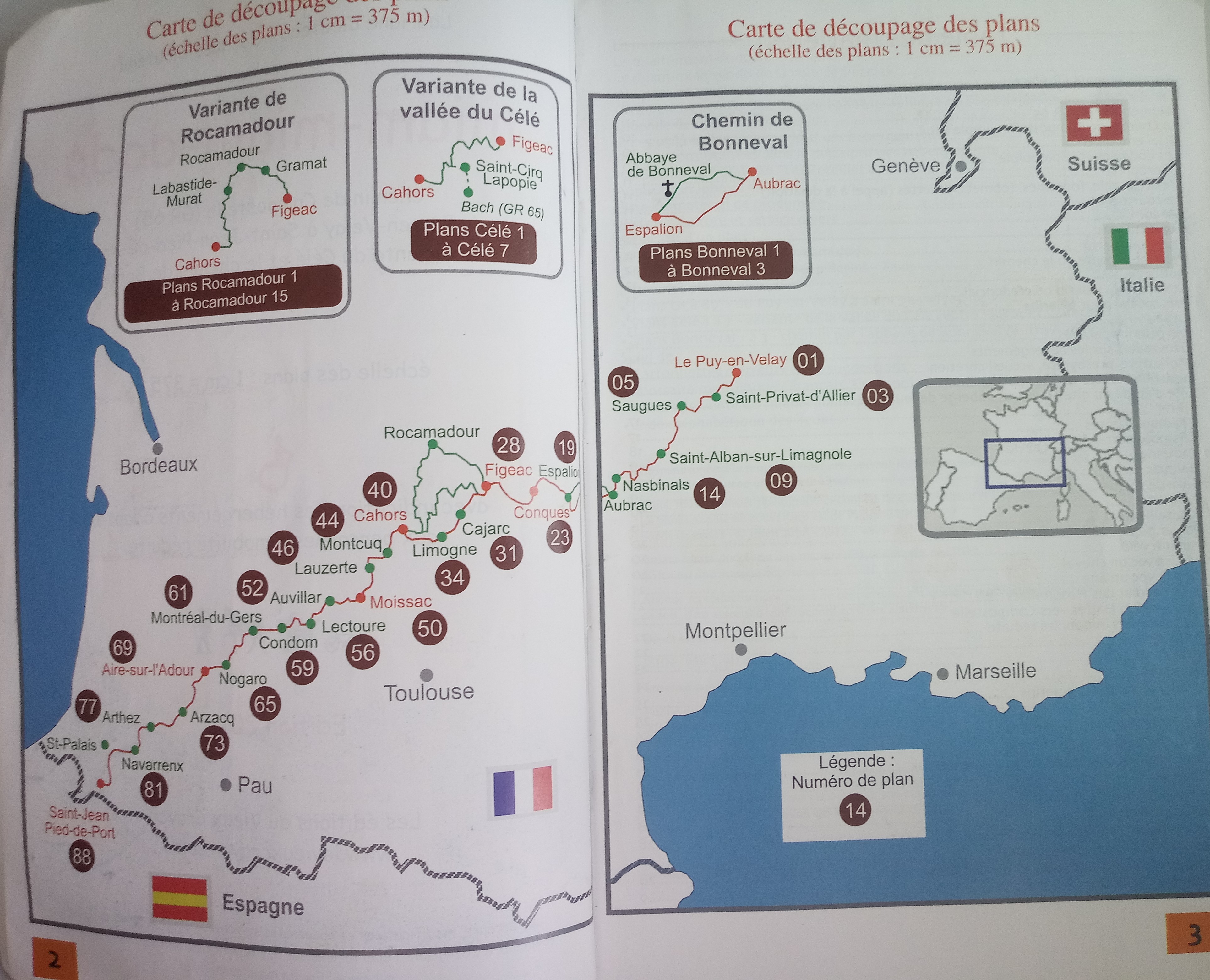
For the popular Camino Frances, the Rother Walking Guide is a great English alternative.
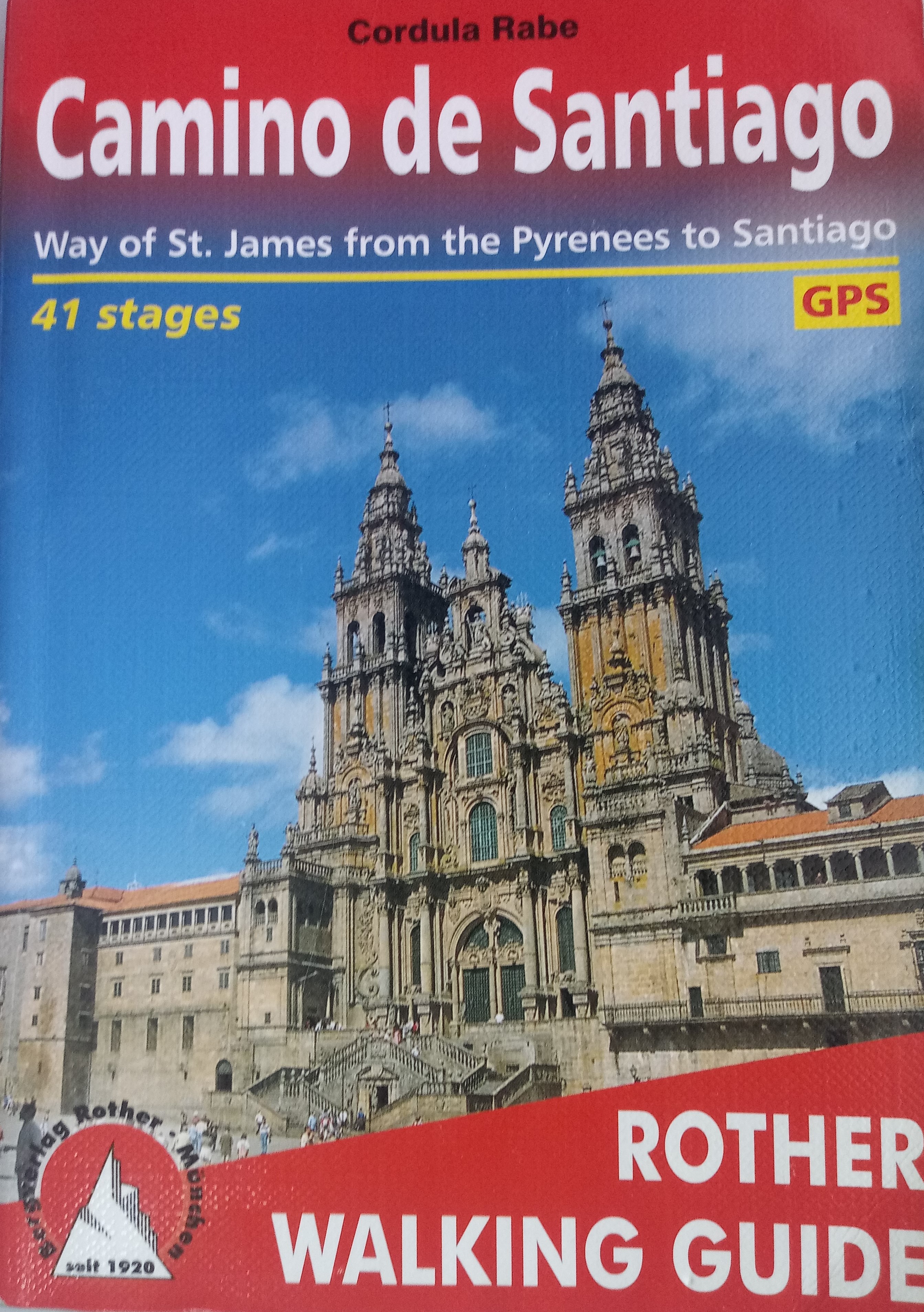
It has mostly the same information as the Miam Miam Dodo, though less comprehensive in the rest stops, town facilities and route variants.

It does however, provide recommended daily itineraries and marks the elevation changes exceptionally well.
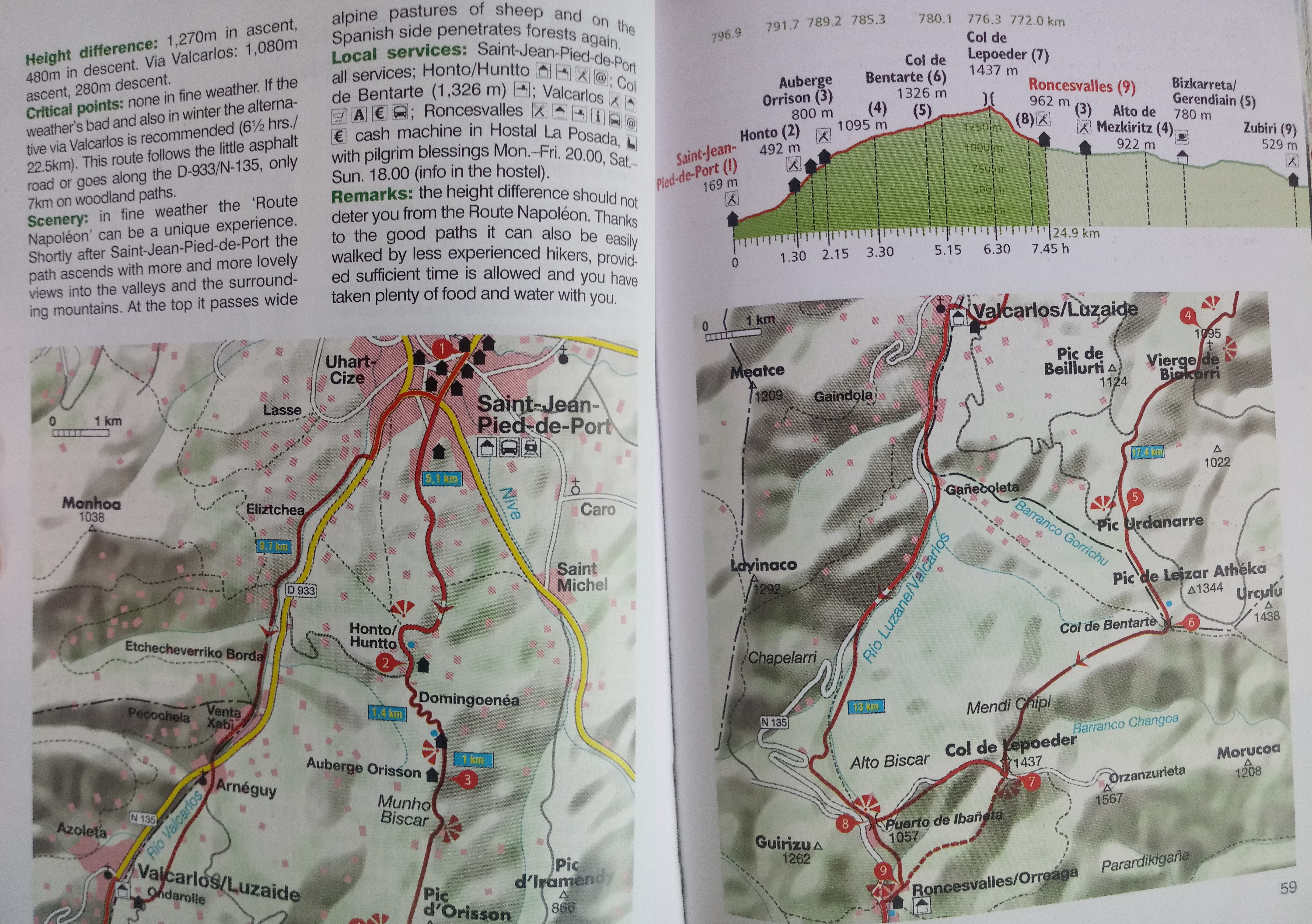
It also has route descriptions and historical information.

-
Do your research here. From my experience, a more “authentic pilgrim’s experience” is more common in the French side. The closer you get to Santiago, the number of hikers will increase dramatically and make the experience feel a lot more sterile and mass-produced. My recommendation is to start deep in France (e.g. Paris, Le Puy, Arles, Vézelay) if this is a priority for you. ↩︎
